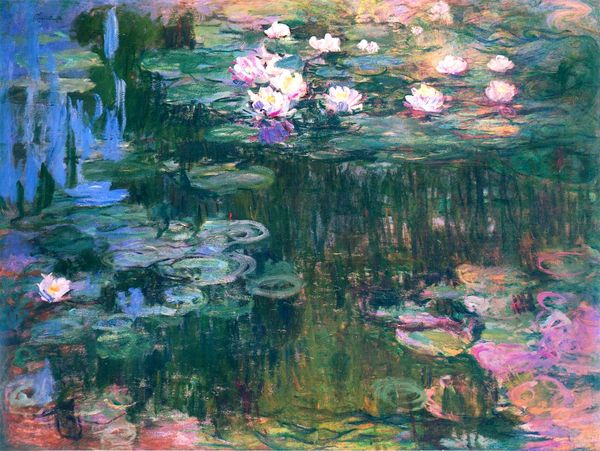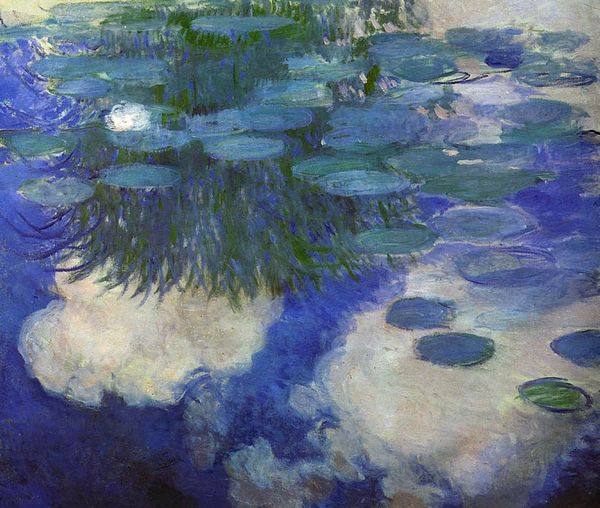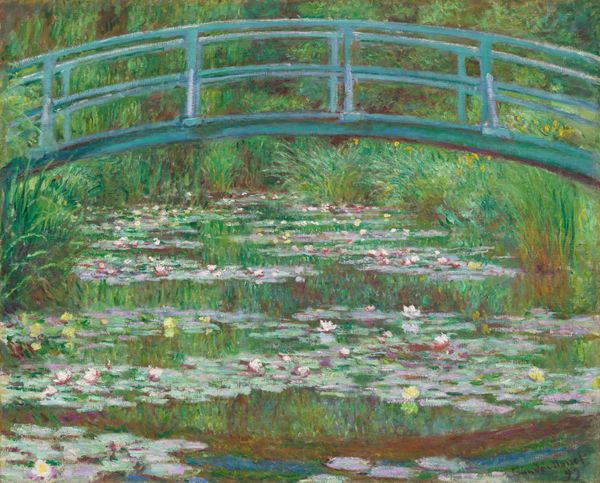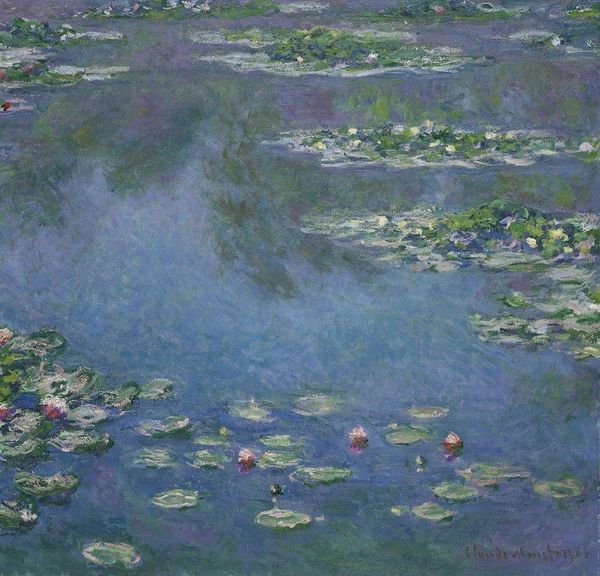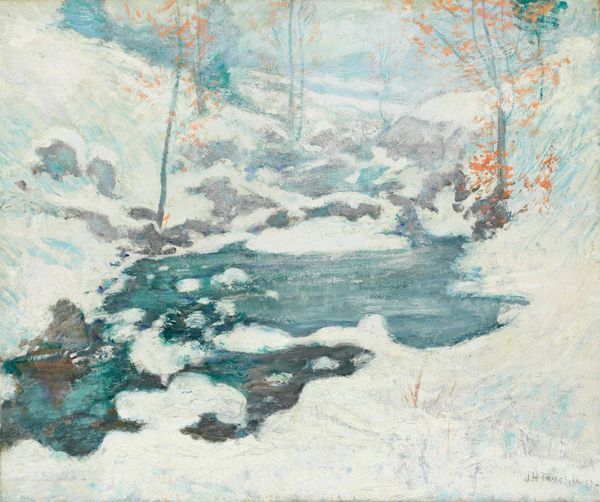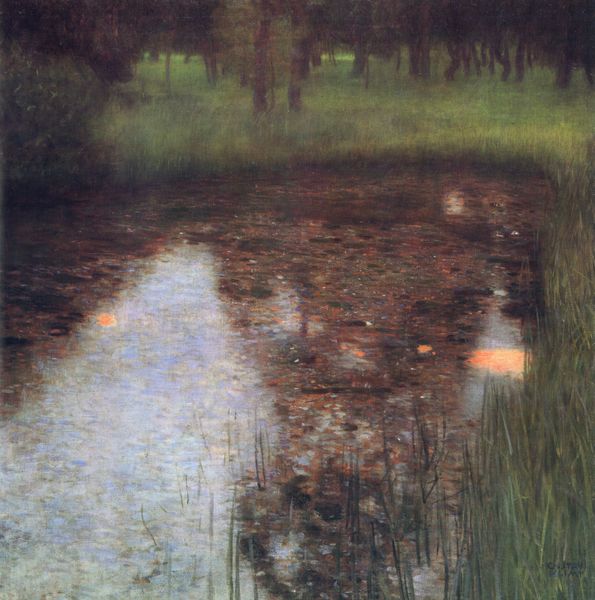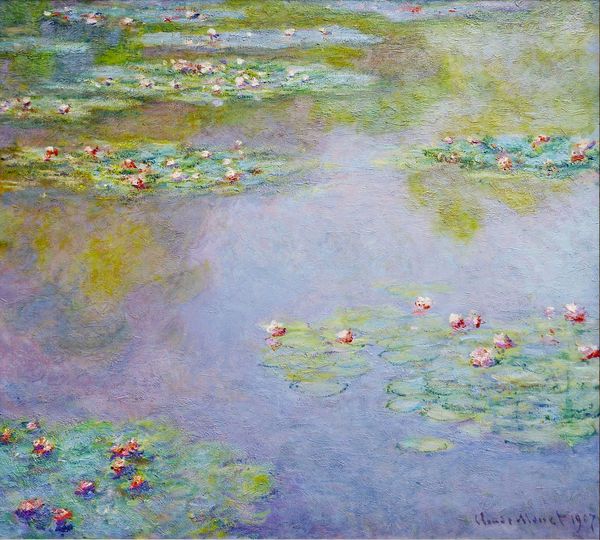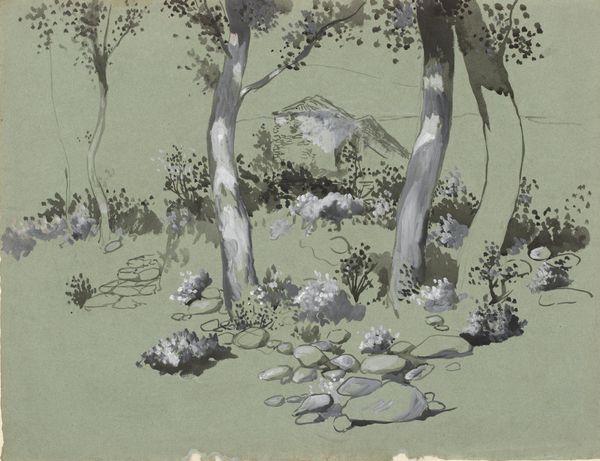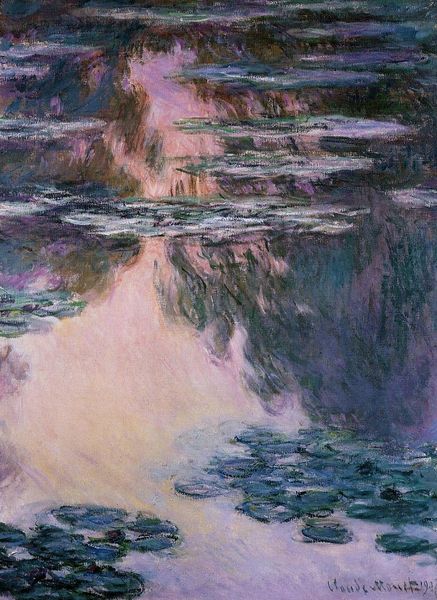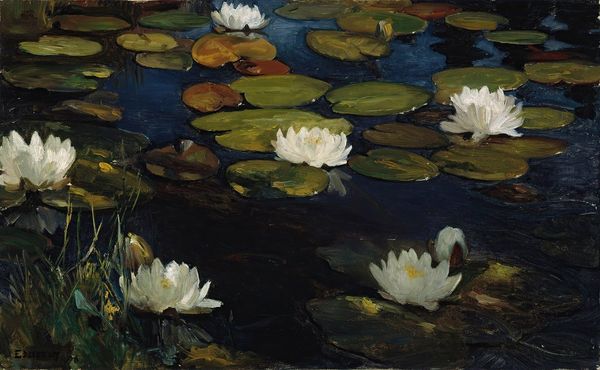
Copyright: Public domain
Curator: Before us is Theodor Kittelsen's "Der Ligger Tjernet I Svartbudalen," painted around 1900, a watercolor painting showcasing a still lake in a shadowy forest. Editor: My initial impression is of muted tranquility. It's dominated by soft blues and greens. It feels almost ghostly, an ethereal moment captured in paint. The composition is pretty interesting; a flat plane of water sits under this kind of riot of hazy green foliage and dark verticals. Curator: The water is indeed the focal point; these water lilies add an emotional layer to it. Water lilies, especially, often represent purity and rebirth. Combined with the darkness, the emotional landscape feels contemplative and somewhat melancholy, maybe signaling the beauty and peace within nature's darker, more mysterious spaces. Editor: Considering it's a watercolor from around 1900, it raises questions about the paper he used. How did the materials influence this hazy aesthetic? The layering and blotting give the piece depth, but at what cost to the paper's integrity? And what kind of cultural value was placed on landscapes such as this – and who could afford paintings like these? Curator: That's astute; his use of watercolor gives the whole scene a dreamy quality, softening the realistic elements and nudging it towards Symbolism, which was, after all, trending at the time. The haziness might echo the misty atmosphere common in Norwegian folklore and fairytales, imbuing the scene with something magical and hidden, maybe even dangerous. Editor: It strikes me as something accessible. He chose materials associated with everyday life. Not oil paint, for example, with its history of the high art world and noble patronage. Curator: Fascinating how he synthesizes those ethereal longings with everyday experiences through recognizable symbols. In that light, the lack of any obvious, mythic creature almost feels even more uncanny because we are expecting one based on his body of work. It reflects on themes of mortality and introspection through something as mundane as a lily pond. Editor: I appreciate that by working in watercolor he might have engaged the everyday in ways not possible working with costly oil paints and precious canvas. A simple, transportable piece of paper lends a totally different context from, say, a wall-sized painting made from expensive, imported pigment. It really can shape and determine audience expectations. Curator: Ultimately, Kittelsen captures the spiritual significance found in seemingly ordinary locations using both established symbols and material practices of his day, allowing viewers to contemplate both inner peace and collective anxiety. Editor: I find the interplay of accessibility and delicate application truly captivating. Thanks for taking the time to investigate that with me!
Comments
No comments
Be the first to comment and join the conversation on the ultimate creative platform.


